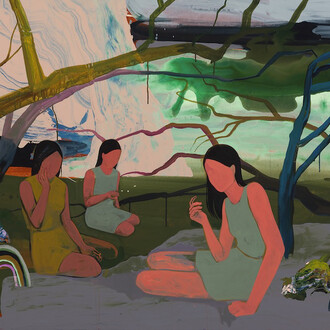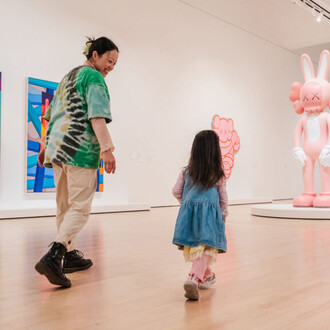I’m making my drawing in spite of the metal. I think I’m going to make a straight line, and it says, "Oh, no you don’t!"
(Richard Diebenkorn, 1962)
Crown Point Press presents Richard Diebenkorn: Prints from two decades, a radiant exhibition of prints made by the artist during a series of residencies at the Press between 1980 and 1990. Organized with the Richard Diebenkorn Foundation and Crown Point Executive Director, Valerie Wade, the show takes place on the occasion of the highly anticipated release of Richard Diebenkorn: The catalogue raisonné of prints (Yale University Press, 2025), which includes new scholarly essays, more than 850 significantly scaled images, and a richly illustrated chronology of Diebenkorn’s printmaking years. The works on view in the Crown Point Gallery were created in the final decade and a half of the artist’s life, the “high point” in his printmaking oeuvre, writes Starr Figura, Curator in the Department of Drawings and Prints at the Museum of Modern Art. In her essay “Richard Diebenkorn, Printmaker,” she adds that the objects made during this period “rank among the most extraordinarily luminous and elegantly structured prints ever produced.”
Richard Diebenkorn (1922–1993) was highly accomplished in printmaking and worked with professional print shops over a period of more than 30 years (1962–1992). Master Printer Kathan Brown at Crown Point Press published a selection of his earliest intaglio prints in 1965 as 41 etchings drypoints. “It was Crown Point Press in San Francisco and the intaglio print processes it offered that captivated him the most: etching, drypoint, aquatint, and related techniques for incising an image into a metal printing plate,” Figura adds, which “provided endless horizons for his work.”
In 1980, the artist began his Clubs and Spades series of works on paper containing symbols and heraldic imagery that had fascinated him since he was a young person; the iconography appeared in his prints as early as 1963. A series of intaglio prints made at the Press in which he deployed clubs, spades, and crosses in the early 1980s is “the first occasion,” Figura writes, “when Diebenkorn’s prints start to rival the saturated color, imposing presence, and painterly ambition of his paintings on paper.” Spade drypoint (1982) evinces his love of the drypoint process with its aggressive lines, while a shimmering aquatint with scraping made the same year, Green tree spade, is remarkable for its vividness and texture.
Ne comprends pas and Oui, both from 1990, were made during one of his most productive residencies at the Press. Oui, with its floating, broken detritus, marked a return to reversal techniques, which he had experimented with nearly a decade prior in 1981. Emily York, in Magical secrets about aquatint: Spit bite, Sugar lift and Other etched tones step-by-step (Crown Point Press, 2008), recalls that Reneé Bott made an aquatint reversal of Ne comprends pas, which became Oui. “Diebenkorn mainly drew with asphaltum to make Ne comprends pas, a predominantly black image in which the drawn forms come through as the white of the paper. After finishing the print, he wondered what it would look like if the lines were dark on light,” writes York.
The very experimental, geometric Passage I and Passage II were made during the same time as Ne comprends pas and Oui and were also created with the reversal process. Diebenkorn added a strip of color to Passage I, as he did with his most celebrated print, Green, published in 1986 by the Press. “It wasn’t the first time that Dick had done that,” and “not a lot of artists that I’ve worked with have done that,” says Bott, from a wide-ranging interview conducted by Karin Breuer, Curator in Charge of the Achenbach Foundation for Graphic Arts, Fine Arts Museums of San Francisco and featured in the volumes. “He kept looking at it and...it wasn’t complete to him without adding something.” Spade Drypoint, 1982.
The exhibition culminates in the weightless 1990 etchings Domino I and II which are, observes Figura, “among the most richly textured and densely composed images that Diebenkorn had ever produced.” As Diebenkorn’s “Ocean Park geometries seem on the brink of dissolving...there is the sense of familiar forms and structures being opened up, loosened, and softened.”
Special film
A new and special film with the late Kathan Brown and Valerie Wade, and together with Andrea Liguori, Executive Director of the Richard Diebenkorn Foundation and Editor, Richard Diebenkorn: The catalogue raisonné of prints, explores the artist’s history with the Press and the “golden era”of printmaking during the 1980s. Liguori, in a tender interview conducted with Brown in late 2023, unearths brightly hued paper scraps discovered during filming that the artist had used to construct an iconic print image. The film was produced at Crown Point Press by Matthew Pendergast.
















